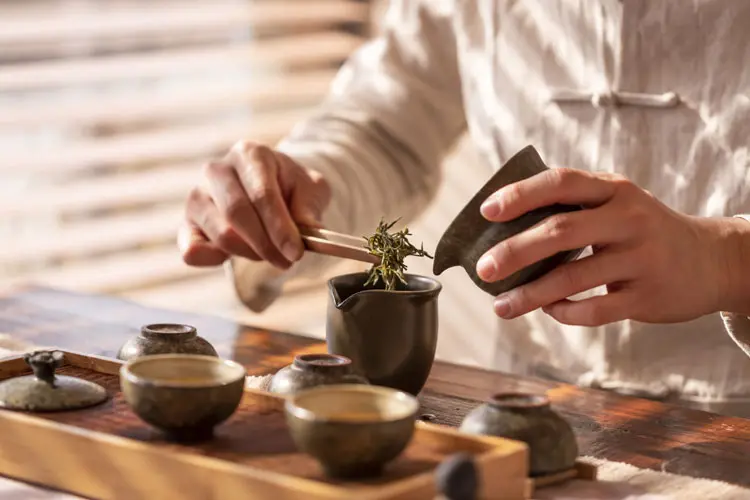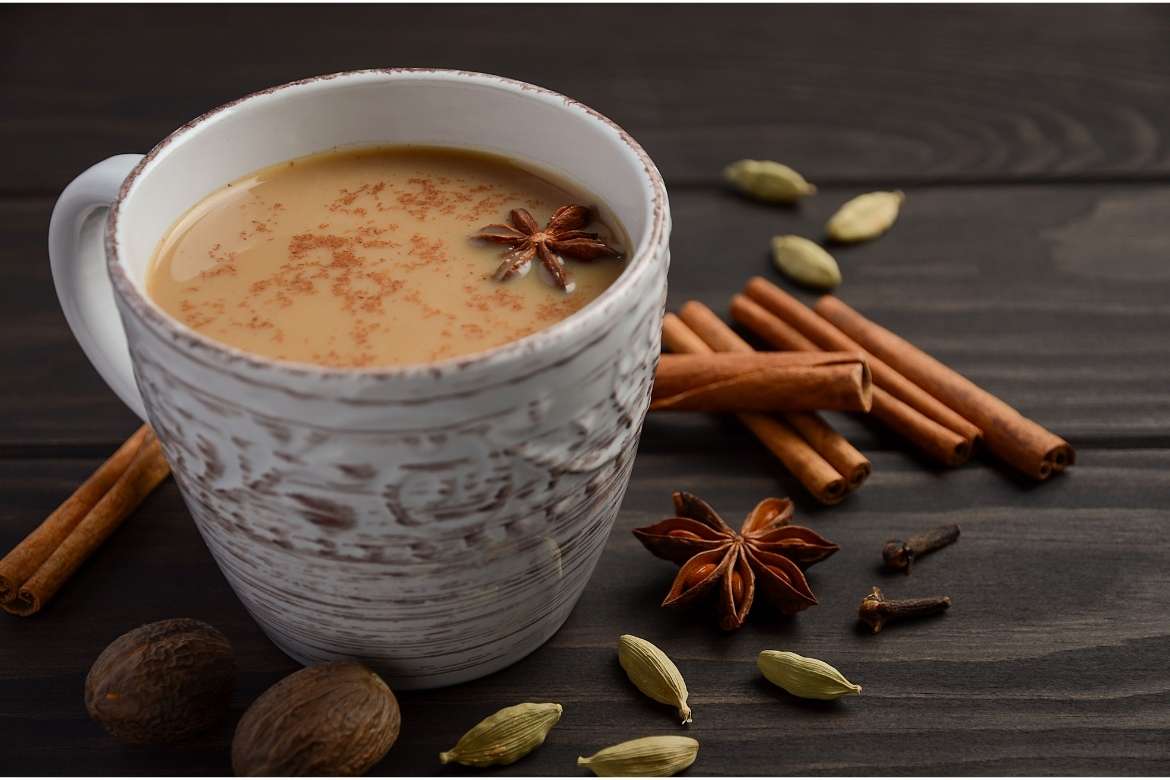The Fascinating World of Tea Culture: Exploring the Rituals, History, and Practices of Tea Around the Globe
Tea is a beverage that is enjoyed by people all over the world. It is more than just a drink, it is a cultural phenomenon. Tea has been a part of human civilization for thousands of years and has played a significant role in shaping the cultures of different countries. In this article, we will explore the fascinating world of tea culture, including the history, rituals, and practices of tea around the globe.
What is tea?
Tea is a beverage that is typically made by steeping the leaves of the Camellia sinensis plant in hot water. This plant is native to China and is grown in many other parts of the world, including India, Sri Lanka, and Kenya.
Tea can be consumed hot or cold, and it can be served plain or with milk, sugar, or other flavorings. It is the second most widely consumed beverage in the world after water.
There are many different types of tea, including black tea, green tea, oolong tea, and white tea. These types of tea differ in their flavor, aroma, and level of oxidation, which is a process that occurs during the production of tea.
Tea has a long history, dating back thousands of years in China. It was traditionally used for medicinal purposes before becoming a popular beverage around the world. Today, tea is enjoyed by people of all ages and cultures, and it is often associated with relaxation, socializing, and health benefits.
History of Tea
Tea has a long and rich history, dating back over 5,000 years. According to legend, tea was discovered by the Chinese emperor Shen Nong in 2737 BCE. He was sitting under a tree while his servant boiled water, and a leaf from the tree fell into the pot. The emperor tasted the resulting beverage and found it to be refreshing and invigorating.
Tea soon became popular among the Chinese aristocracy and was used for medicinal purposes. It wasn’t until the Tang dynasty (618-907 CE) that tea became a popular beverage among the general population. From China, tea spread to Japan, Korea, and other parts of Asia, eventually making its way to Europe and the rest of the world.
Tea Culture Around the World
Tea is enjoyed in many different ways around the world. Here are some examples of tea culture from different countries:
- China: Tea is an integral part of Chinese culture and has been for centuries. The Chinese have developed many different tea ceremonies, each with its own unique rituals and practices. Some of the most famous Chinese teas include green tea, oolong tea, and pu-erh tea.
- Japan: In Japan, tea is closely tied to the philosophy of Zen Buddhism. The Japanese tea ceremony, or Chanoyu, is a highly ritualized and formalized practice that emphasizes harmony, respect, and tranquility. Matcha, a powdered green tea, is a staple of Japanese tea culture.
- England: The British have a long history of tea consumption, dating back to the 17th century. Afternoon tea, a formal occasion featuring tea, sandwiches, and sweets, became popular in the 19th century and is still enjoyed by many today. Black tea with milk and sugar is a classic British tea preparation.
- Morocco: In Morocco, tea is a symbol of hospitality and is often served to guests. Moroccan tea is typically made with green tea and mint leaves, and it is served sweetened with sugar.
- India: India is one of the largest tea producers in the world, and tea is a staple of Indian culture. Chai, a spiced tea made with black tea, milk, and spices such as cinnamon and cardamom, is a popular Indian tea preparation.

Here’s a comparison table that highlights some of the key differences between the tea culture of China, Japan, England, Morocco, and India:
| Aspect | China | Japan | England | Morocco | India |
|---|---|---|---|---|---|
| History & Tradition | Tea has been part of Chinese culture for thousands of years, with a rich history and numerous ceremonies and customs surrounding tea. | Tea culture in Japan is deeply influenced by Zen Buddhism and has a strong emphasis on simplicity and mindfulness. | Tea was introduced to England in the 17th century and became a popular social ritual associated with upper-class culture. | Moroccan tea culture is centered around the use of fresh mint and is deeply rooted in hospitality and social customs. | India has a long history of tea cultivation, with tea playing an important role in Indian culture and customs. |
| Types of Tea | China produces a wide variety of teas, including green, black, white, oolong, and pu-erh. | Japan is famous for its green teas, including sencha, matcha, and genmaicha. | England is known for its black teas, particularly blends like English Breakfast and Earl Grey. | Moroccan tea is typically made from green tea and fresh mint leaves. | India is known for its robust black teas, including Assam and Darjeeling. |
| Tea Ceremony | China has a long history of elaborate tea ceremonies, such as Gongfu Cha and Chado, that involve precise rituals and equipment. | Japan’s tea ceremony, or Chanoyu, is a highly ritualized practice that emphasizes harmony, respect, and purity. | While there is no formal tea ceremony in England, the tradition of afternoon tea is a formal social ritual that often includes tea, finger sandwiches, and scones. | Morocco has its own unique tea ceremony that involves pouring tea from a height to create froth and serving it in small glasses. | India does not have a formal tea ceremony, but tea is often served in social settings and hospitality is an important part of Indian culture. |
| Preparation | In China, tea is often prepared in small, individual servings using a Gaiwan or Yixing teapot. | In Japan, tea is often prepared using a chasen (bamboo whisk) and chawan (tea bowl) in a traditional tea ceremony. | In England, tea is typically brewed in a teapot and served with milk and sugar. | In Morocco, tea is brewed in a traditional teapot called a “berrad” and served with fresh mint and sugar. | In India, tea is often brewed in a pot with milk, spices, and sugar to make chai. |
| Social Context | Tea is an integral part of Chinese social customs and is often served to guests as a sign of hospitality and respect. | In Japan, tea is often served in formal settings, such as tea ceremonies or at tea houses, as a way to promote mindfulness and social harmony. | In England, tea is often served in social settings, such as afternoon tea or high tea, as a way to gather with friends and family. | In Morocco, tea is often served as a sign of hospitality and is an important part of social customs and gatherings. | In India, tea is often served as a way to promote hospitality and social connection, and is an important part of daily life. |
Signature Tea Recipes for Each Prominent Tea Culture
China: Jasmine Pearl Tea
Ingredients:
- 2 tablespoons jasmine pearls tea
- 2 cups of water
- Honey (optional)
Directions:
- Boil water in a kettle or pot.
- Put jasmine pearls tea in a tea strainer or infuser.
- Pour hot water into a teapot and add the tea strainer or infuser.
- Steep the tea for 3-5 minutes.
- Remove the tea strainer or infuser and pour the tea into cups.
- Add honey if desired.
- Enjoy your fragrant and delicate jasmine pearl tea!
Japan: Matcha Green Tea Latte
Ingredients:
- 1 teaspoon matcha green tea powder
- 2 tablespoons hot water
- 1 cup milk (dairy or plant-based)
- Honey or sugar (optional)
Directions:
- Add matcha green tea powder to a bowl.
- Add hot water and whisk until smooth and frothy.
- Heat milk in a saucepan until steaming.
- Pour the milk into the bowl with the matcha tea mixture.
- Whisk again until the mixture is smooth and frothy.
- Add honey or sugar if desired.
- Pour into a cup and enjoy your creamy and flavorful matcha green tea latte!
England: Earl Grey Tea
Ingredients:
- 2 teaspoons Earl Grey tea leaves
- 2 cups of water
- Milk or lemon (optional)
- Sugar or honey (optional)
Directions:
- Boil water in a kettle or pot.
- Put Earl Grey tea leaves in a tea strainer or infuser.
- Pour hot water into a teapot and add the tea strainer or infuser.
- Steep the tea for 3-5 minutes.
- Remove the tea strainer or infuser and pour the tea into cups.
- Add milk or lemon if desired.
- Add sugar or honey if desired.
- Savor your classic and sophisticated Earl Grey tea!
Morocco: Moroccan Mint Tea
Ingredients:
- 2 tablespoons green tea leaves
- 1/2 cup fresh mint leaves
- 4 cups of water
- Sugar (optional)
Directions:
- Boil water in a kettle or pot.
- Add green tea leaves to a teapot.
- Pour hot water into the teapot and let it steep for 2-3 minutes.
- Strain the tea leaves and discard.
- Boil fresh mint leaves in the same pot for a few seconds and discard the water.
- Pour the green tea into the pot with the mint leaves.
- Add sugar if desired.
- Pour the tea into glasses and enjoy your refreshing and aromatic Moroccan mint tea!
India: Masala Chai Tea
Ingredients:
- 2 cups water
- 2 black tea bags or 2 teaspoons black tea leaves
- 1 cinnamon stick
- 4-5 cloves
- 4-5 cardamom pods
- 1/2 inch fresh ginger root, peeled and grated
- 1/4 cup milk
- Sugar (optional)
Directions:
- Boil water in a saucepan.
- Add black tea bags or black tea leaves, cinnamon stick, cloves, cardamom pods, and grated ginger to the water.
- Let it simmer for 5-7 minutes.
- Add milk and simmer for another 2-3 minutes.
- Remove from heat and strain the tea.
- Add sugar if desired.
- Pour the tea into cups and enjoy your spicy tea
Benefits of Tea
Tea is not just a delicious and refreshing beverage, it also has many health benefits. Here are some of the benefits of drinking tea:
- Antioxidants: Tea contains antioxidants, which are compounds that help to protect the body from damage caused by free radicals. Free radicals are unstable molecules that can damage cells and contribute to aging and disease.
- Lowered risk of chronic diseases: Drinking tea has been linked to a lower risk of chronic diseases such as heart disease, diabetes, and certain types of cancer.
- Boosted immune system: Tea contains compounds that can help to boost the immune system, which can help to protect against illnesses such as the common cold.
Conclusion
Tea is a beverage that has played a significant role in shaping the cultures of different countries. It has a rich history and is enjoyed in many different ways around the world. From the Chinese tea ceremonies to the British afternoon tea, tea culture
Originally posted 2023-01-06 08:18:31.


